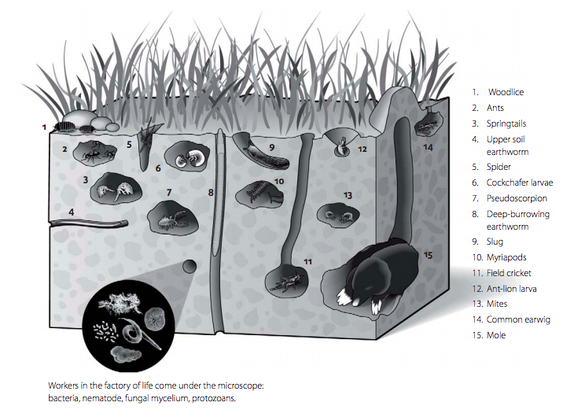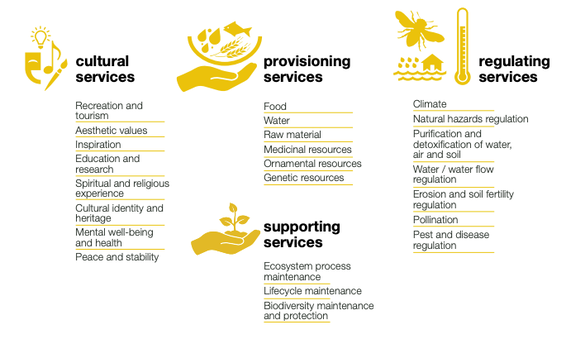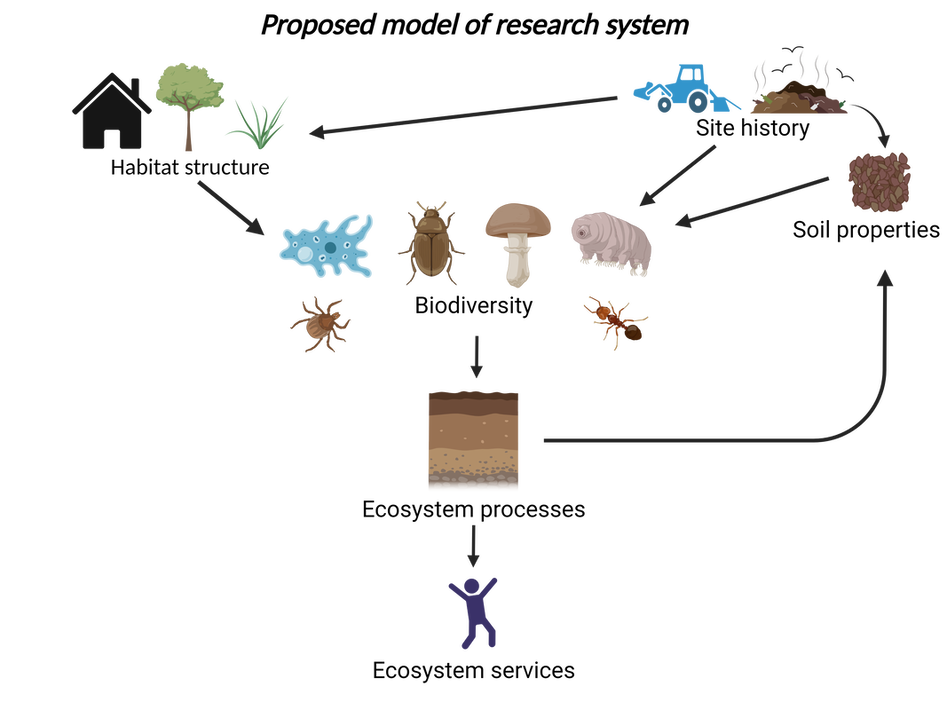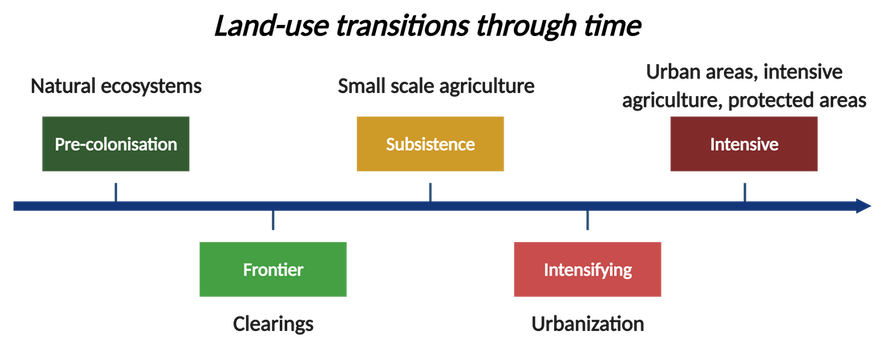Welcome!
Soils have been extensively studied in agricultural and forested systems. Much of their nature and components have begun to be unraveled. However, there persists a large gap of knowledge in relating what we currently know of soils to urban environments. This remains a crucial priority since more than half of humanity now resides in urban areas (1). With increased anthropogenic pressures on the land, how is soil biodiversity reacting and will the goods we derive from them as ecosystem services be compromised?
Soil biodiversitySoils harbor unimaginable amounts of life. Experts estimate that within a single gram of soil, millions of microscope bacteria, nematodes, and fungi co-exist with larger animals such as insects, earthworms, and snails (2). Needless to say, body size is king in this environment. Studying the diversity in these communities allows ecologists to relate their presence indirectly to ecosystem services. |
Ecosystem servicesThe activity of soil organisms contributes to ecosystem function; that is, the innerworkings of an ecosystem. For soils, some important processes are decomposition, nutrient cycling, and water infiltration (3). Without a strong biodiverse community of soil organisms, ecosystem function can be jeopardized, and by extension, ecosystem services. For cities, this could spillover into impacting human wellness by reducing the capacity of multiple ecosystem services such as food stocks. |
Conceptual model of the elements interacting and driving soil biodiversity in a city and how it relates to ecosystem services. Site history, the previous land-uses of an area, influences soil biodiversity indirectly via both habitat structure and soil properties. Habitat structure as the physical built environment (i.e., buildings) and the various public and private plant communities have a hand in determining soil biodiversity by altering soil conditions, making it favorable/unfavorable for certain soil organisms. Similarly, soil physical properties, such as texture (percent of sand, silt, and clay content) and compaction (the bulk density), and soil chemical properties, such as acidity/alkilinity (pH levels) and toxicity (concentration of heavy metals), can equally determine soil biodiversity by altering soil conditions. All of these play a cascading role in developing the soil community and subsequently the function of that ecosystem.
My goal
Determining how legacy effects of
past land-uses influences soil animals.
past land-uses influences soil animals.
By assessing how past land-uses determines the assembly of present-day soil organisms, we can make precautionary inferences on how future soil communities will respond to current urbanization trends… because those, too, shall be past land-uses one day.
The proposed chronosequence of land-use transtions in a North American city, adapted from the works of (4). All urban environments began as natural ecosystems prior to the arrival of colonisers in the 1600's. In the 18th and 19th centuries, colonisation activities ensued with lumber production and subsistence farming. Then, by the 20th century and the advent of industrialisation, we see growing exodus from the rural countrysides to city centers, gradually growing these epicenters. Finally, contemporary urbanization has led to dense areas with intensive agriculture, megacities, and the need for dedicated greenspaces as natural ecosystems shrink.
References
1: United Nations, Department of Economic and Social Affairs
2: Kathy Merrifield of Oregon State University, available here
3: Setälä H, et al. 2014. Urban and agricultural soils: conflicts and trade-offs in the optimization of ecosystem services. Urban Ecosystems. 17: 239-253. Available here
4: Foley et al. 2005. Global Consequences of Land Use. Science. 309 (5734). Available here
All figures created with BioRender.com
1: United Nations, Department of Economic and Social Affairs
2: Kathy Merrifield of Oregon State University, available here
3: Setälä H, et al. 2014. Urban and agricultural soils: conflicts and trade-offs in the optimization of ecosystem services. Urban Ecosystems. 17: 239-253. Available here
4: Foley et al. 2005. Global Consequences of Land Use. Science. 309 (5734). Available here
All figures created with BioRender.com




